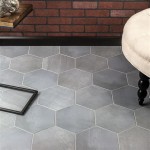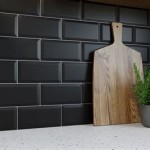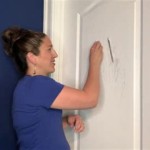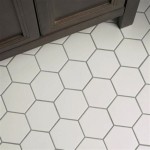How To Fill Grout In Bathroom Tiles
Grout, the material filling the spaces between bathroom tiles, plays a crucial role in maintaining the integrity and aesthetics of tiled surfaces. Over time, grout can crack, crumble, or discolor due to moisture exposure, cleaning chemicals, and general wear and tear. Addressing damaged grout promptly is essential to prevent water damage, mold growth, and further deterioration of the tiled surface. This article provides a comprehensive guide on how to fill grout in bathroom tiles, ensuring a durable and visually appealing result.
Identifying Grout Damage and Assessing the Scope of Repair
Prior to embarking on the grout repair process, a thorough inspection of the tiled area is necessary. This involves identifying the specific type of damage present, such as cracks, crumbling, missing grout, or discoloration. Furthermore, the extent of the damage needs to be assessed. Is the damage isolated to a few tiles, or is it widespread throughout the entire area? This initial assessment will determine the necessary materials and the time required for the project.
Cracks in grout can range from hairline fissures to wider, more pronounced gaps. Crumbling grout often exhibits a powdery or sandy texture and may easily flake away from the tile edges. Missing grout, obviously, leaves open spaces between the tiles, exposing the underlying substrate to moisture. Discoloration can indicate mold or mildew growth, or simply the accumulation of dirt and grime over time. Distinguishing between these issues is crucial for selecting the appropriate repair method and cleaning solutions.
A critical part of the assessment involves examining the substrate beneath the tiles. If the substrate is compromised, simply filling the grout lines will not provide a long-term solution. Underlying issues, such as leaks or structural damage, must be addressed before any grout repair is undertaken. Ignoring these underlying problems will lead to the recurrence of grout damage and potentially more significant and costly repairs in the future.
Tools needed for inspection include a bright light source, a magnifying glass for close examination of cracks, and a small, pointed tool (like a screwdriver or awl) to gently test the integrity of the grout. Records of the assessment can be kept by taking photographs of damaged areas, and documenting the extent of repair needed. These records will prove useful for determining amount and type of materials to purchase.
Preparing the Area and Removing Old Grout
The preparation phase is critical for achieving a successful grout repair. Start by thoroughly cleaning the tiled area to remove any dirt, grime, soap scum, or mildew. Use a grout cleaner specifically designed for bathroom tiles, following the manufacturer's instructions carefully. Rinse the area with clean water and allow it to dry completely. The grout and tiles need to be completely dry before proceeding with grout removal.
Next, protect surrounding surfaces from potential damage. Cover nearby fixtures, such as sinks, toilets, and bathtubs, with plastic sheeting or drop cloths. Apply painter's tape to the edges of the tiles to prevent scratching or chipping during the grout removal process. Adequate protection will save time on cleaning later.
Removing old grout requires careful attention to avoid damaging the tiles. Several tools can be used for grout removal, depending on the type and condition of the grout. A grout saw is a handheld tool specifically designed for cutting through grout. Use it with a steady, controlled motion, avoiding excessive pressure that could scratch the tiles. An oscillating multi-tool with a grout removal attachment is another option, offering greater speed and precision. A utility knife with a sharp blade can be used for smaller areas or for removing loose, crumbling grout.
Regardless of the tool used, the goal is to remove the grout to a depth of at least 2/3 of the tile thickness. This provides sufficient space for the new grout to adhere properly. Work in small sections, carefully removing the grout along the tile edges. Frequently clean the area with a brush or vacuum to remove debris and maintain visibility. Wear safety glasses and a dust mask to protect yourself from grout dust and debris.
After the majority of the grout has been removed, use a grout scraper or pick to remove any remaining residue. Ensure that the tile edges are clean and free of any old grout particles. Vacuum the entire area thoroughly to remove all loose debris. Finally, wipe down the tiles with a damp cloth to remove any remaining dust. The area must be completely clean and dry before applying new grout.
Applying New Grout and Finishing the Job
Once the old grout has been completely removed and the area is clean and dry, it's time to apply the new grout. Select a grout that matches the existing grout color and type, to ensure a seamless appearance. Grout comes in two main types: sanded and unsanded. Sanded grout is suitable for wider grout lines (1/8 inch or greater), while unsanded grout is best for narrow grout lines. Epoxy grout is another option, offering superior stain resistance and durability, but is more expensive and can be more challenging to work with.
Prepare the grout according to the manufacturer's instructions. Typically, this involves mixing the grout powder with water to achieve a smooth, paste-like consistency. Avoid adding too much water, as this can weaken the grout and lead to cracking. Mix the grout thoroughly, ensuring that there are no lumps or dry pockets. Allow the grout to sit for the specified slaking time, as indicated on the packaging, which allows the polymers to properly hydrate.
Apply the grout using a grout float, a rubber or plastic tool designed for spreading grout evenly. Hold the float at a 45-degree angle to the tiles and press the grout into the grout lines, working diagonally across the tiles. Ensure that the grout lines are completely filled, without any air pockets. Work in small sections, applying grout to a manageable area at a time.
After applying the grout, wait for the specified time (usually 15-30 minutes), as indicated on the grout packaging, to allow the grout to set slightly. Then, use a damp sponge to remove excess grout from the tile surfaces. Rinse the sponge frequently in clean water, and wring it out thoroughly to avoid oversaturating the grout. Wipe the tiles diagonally, using a light, even pressure.
Repeat the sponging process several times, gradually removing more and more of the excess grout. The goal is to leave the grout lines flush with the tile surfaces, without any grout haze on the tiles. After the initial sponging, allow the grout to dry for a few hours, or overnight, depending on the manufacturer's instructions. Once the grout is dry, a grout haze may still be present on the tiles. This haze can be removed with a grout haze remover, following the manufacturer's instructions.
Finally, apply a grout sealer to protect the new grout from stains and moisture. Apply the sealer evenly, using a small brush or applicator pad. Allow the sealer to dry completely before using the shower or cleaning the tiles. Reapply the sealer periodically, as needed, to maintain its protective properties. Proper sealing helps to avoid future damage to the grout and tiles.
Dispose of excess grout and cleaning materials responsibly. Properly clean all tools used for the job. Inspect the finished area for any imperfections, such as uneven grout lines or remaining grout haze. Touch up any problem areas as needed. Following these steps ensures a professional-looking and long-lasting grout repair in the bathroom.

How To Prevent Expensive Bathroom Shower Tile And Grout Repair Promaster Home Handyman

Best Bathroom Tile Grout And Sealer For Durable Finishing Roff

Grouting How To Grout Tiles Best Colours Clean

Tile Grout Repair 5 Steps To Fully Ed True Value Hardware

Quick Fix Repair Ed Bathroom Grout

Easiest Way To Grout Bathroom Floor Tiles Roff

How To Fix Grout S Diy Nonprofit Home Inspections

How To Repair Ed Tile Grout An Easy Guide The Lived In Look

Multiple Options For Fixing Ed Grout Around A Tub The Seattle Times

How To Grout Shower Tile Quick And Easy Diy Project
Related Posts








